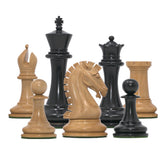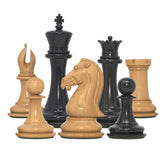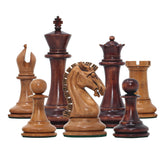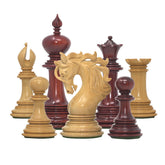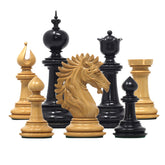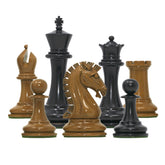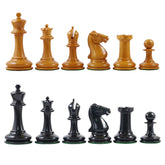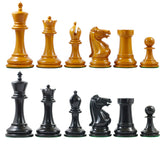WANT TO KNOW WHICH IS THE MOST DIFFICULT POSITION IN CHESS
Chess is a strategic board game played by millions of people worldwide. It is a battle of wits and intellect, where two players face off on a checkerboard consisting of 64 squares. The objective of the game is to checkmate the opponent's king, putting it in a position where it is under attack and cannot escape capture.

The pieces move in specific ways, with the goal of capturing the opponent's pieces while protecting their own. The queen is the most powerful piece, capable of moving in any direction along straight lines or diagonals. The knights move in a unique L-shape pattern, while the rooks move horizontally or vertically. The bishops move diagonally.
Strategic planning, tactical maneuvers, and calculation are key elements of chess. Players must carefully consider their moves, anticipating their opponent's responses and planning several moves ahead. The game requires foresight, pattern recognition, and the ability to evaluate positions accurately.
Chess is not only a competitive game but also a mental exercise that improves critical thinking, problem-solving skills, and concentration. It has a rich history, dating back over a millennium, and is played at various levels, from casual matches to highly competitive tournaments.
With its timeless appeal and infinite possibilities, chess continues to captivate and challenge players of all ages and skill levels. It is a game that fosters strategic thinking, creativity, and a deep appreciation for the complexities of the mind.

The Most Difficult Position in Chess: A Battle of Complexity and Calculation
Chess, known as the "Game of Kings," has captivated minds for centuries with its intricate strategies and tactical maneuvers. Within this ancient game, there are positions that stand out as particularly challenging, demanding exceptional skill and foresight from players. Determining the most difficult position in chess is subjective, as the complexity can vary based on individual skill levels and the specific position at hand. However, one position that consistently presents immense difficulties is the endgame with a few pieces left on the board. In this article, we will explore why the endgame can be considered the most challenging phase of the game.
The endgame is the final stage of a chess game, where the board has fewer pieces compared to the opening or middlegame. It typically occurs after many exchanges and captures have taken place. While the opening and middlegame require strategic planning and positional understanding, the endgame demands precise calculation, deep knowledge of specific positions, and the ability to convert advantages into a winning position.
One of the reasons the endgame is so challenging is the reduced material on the board. With fewer pieces, each move carries greater significance, and even the slightest inaccuracy can completely alter the outcome of the game. Additionally, the absence of a large number of pieces often means that players must rely on the power of their pawns, which becomes crucial in creating passed pawns or promoting them to queens. The ability to accurately evaluate pawn structures, pawn breaks, and pawn promotion techniques is crucial for success in the endgame.
Furthermore, the endgame often involves intricate king maneuvering. In the absence of many pieces, the king becomes an active participant, rather than a passive figure seeking shelter. King safety and activity are of paramount importance in the endgame. Players must navigate delicate positions, ensuring their king remains safe from checks and takes an active role in supporting their pawns or attacking the opponent's pawns.
Another factor that adds to the complexity of the endgame is the presence of specific endgame principles and techniques. Endgame studies have provided us with valuable knowledge and guidelines for different types of endgame positions. These principles include concepts such as opposition, triangulation, zugzwang, and the rule of the square. Understanding and effectively applying these principles can greatly enhance a player's chances of success in the endgame. However, recognizing the applicability of these principles in a given position and executing them accurately can be extremely challenging.
Additionally, the endgame often requires precise calculation and deep calculation horizons. Players must accurately assess the consequences of their moves several moves ahead and anticipate their opponent's responses. Calculation becomes especially critical when evaluating pawn races, king and pawn endgames, or complex rook endgames. The slightest miscalculation can result in a missed opportunity or a disastrous blunder, turning the game in favor of the opponent.

In the endgame, time pressure can exacerbate the difficulties. With fewer pieces on the board, decisions become more critical, and the clock ticking down can add an extra layer of pressure. This can lead to rushed moves and mistakes, as players struggle to make decisions while considering all possible variations and outcomes.
Moreover, the psychological aspect of the endgame adds to its complexity. The tension, the weight of the game's outcome, and the awareness that a single move can make or break the position can influence players' decision-making. Maintaining concentration, composure, and clarity of thought in such high-pressure situations is a skill that separates exceptional players from the rest.
While the endgame may be considered the most difficult position in chess, it is important to note that it is also the phase where a player's true understanding of the game can shine through. It is a test of skill, patience, and resilience. Players who have developed a deep understanding of endgame principles, possess accurate calculation skills, and exhibit strong psychological fortitude have a distinct advantage in these complex positions.
To master the endgame, players must study and analyze numerous endgame positions, develop their calculation abilities, and constantly sharpen their skills. Books, online resources, and studying famous endgame compositions can provide valuable insights into various endgame scenarios. Regular practice and analyzing one's own games to identify mistakes and missed opportunities are also crucial for improvement.
In conclusion, while the most difficult position in chess may be subjective, the endgame consistently presents immense challenges to players. The reduced material, reliance on pawn play, intricate king maneuvering, specific endgame principles and techniques, precise calculation, time pressure, and psychological aspects make the endgame a formidable test of a player's skills. Only through dedicated study, practice, and experience can players navigate the complexities of the endgame and emerge victorious. The endgame serves as a reminder of the immense depth and beauty of the game of chess, captivating players and enthusiasts alike with its strategic and tactical intricacies.
For more interesting articles visit : www.stauntoncastle.com
Buy Wooden Chess Sets and Pieces : www.stauntoncastle.com
Sample Block Quote
Sample Paragraph Text
- basic rules of chess game
- benefits of chess game
- best benefit of chess game
- best position in chess
- chess game
- chess game facts
- chess game for kids
- chess game history
- chess games
- chess position
- Maintain Focus During Chess Games
- online chess game
- online chess games
- play chess game
- WANT TO KNOW WHICH IS THE MOST DIFFICULT POSITION IN CHESS
- wooden chess game
